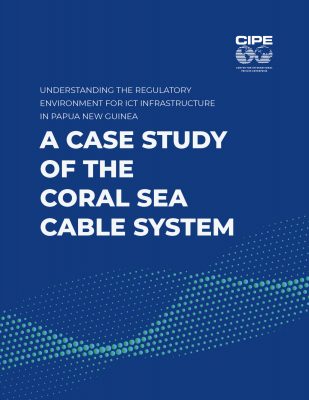 Over the past decade, digital connectivity has emerged as a critical new form of infrastructure, akin to roads, energy, or ports—underpinning economic growth and social development. In Papua New Guinea (PNG), the advent of digital connectivity has opened up new avenues for communication, commerce, education, and governance. Indeed, the introduction of the internet in PNG nearly three decades ago (1997) has accelerated the country’s digitization efforts. However, despite the digital infrastructure strategies of the Government of PNG (GoPNG), broadband access—both fixed and mobile—remains limited.
Over the past decade, digital connectivity has emerged as a critical new form of infrastructure, akin to roads, energy, or ports—underpinning economic growth and social development. In Papua New Guinea (PNG), the advent of digital connectivity has opened up new avenues for communication, commerce, education, and governance. Indeed, the introduction of the internet in PNG nearly three decades ago (1997) has accelerated the country’s digitization efforts. However, despite the digital infrastructure strategies of the Government of PNG (GoPNG), broadband access—both fixed and mobile—remains limited.
Through this case study, CIPE, the Institute of National Affairs (INA), and the Center for Indonesian Policy Studies (CIPS) analyze the Coral Sea Cable System (CS2), the fiber-optic international subsea cable that links both PNG and the Solomon Islands to Australia. The report assesses the planning, procurement, implementation, and governance of the CS2 and provides recommendations and lessons learned for future PNG ICT infrastructure projects.
CIPE supports Pacific Islands partners to achieve a digital future with an open, secure, and reliable internet in which democracy delivers tangible benefits and the opportunity for all to prosper.
To learn more about CIPE’s digital governance work in the Pacific Island region, check out the resources highlighted below:
- Papua New Guinea’s Digital Transformation: Understanding Legal and Regulatory Challenges
- Papua New Guinea’s Digital Transformation: Understanding the Governance Structure
- Understanding the Regulatory Environment for ICT Infrastructure in Papua New Guinea: A Case Study on the Integrated Government Information System (IGIS)
- Harnessing the Power of the Digital Economy (HPDE) Tok Pisin-English Digital Vocabulary Mini Dictionary
Published Date: February 26, 2024
